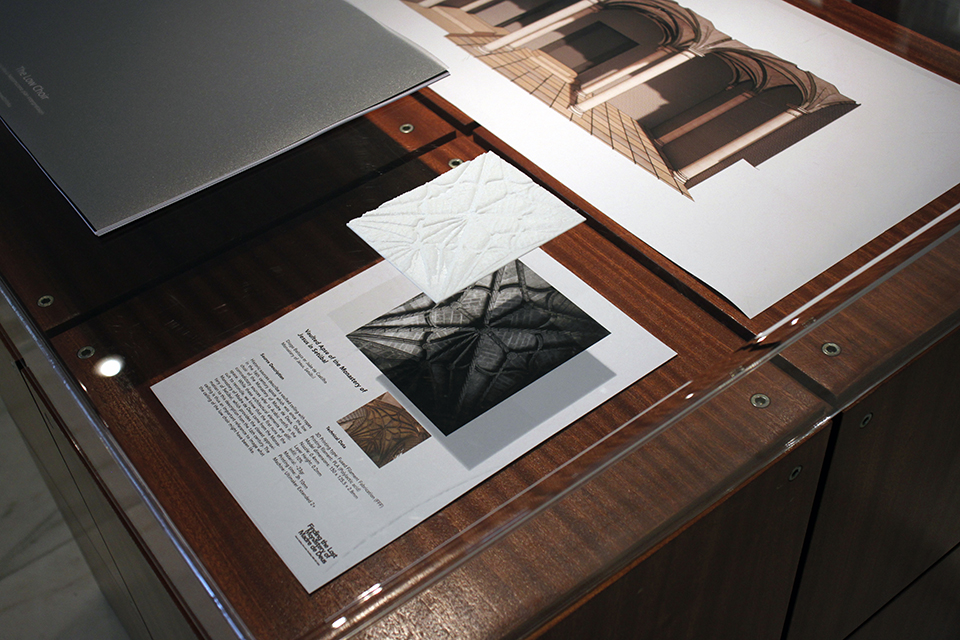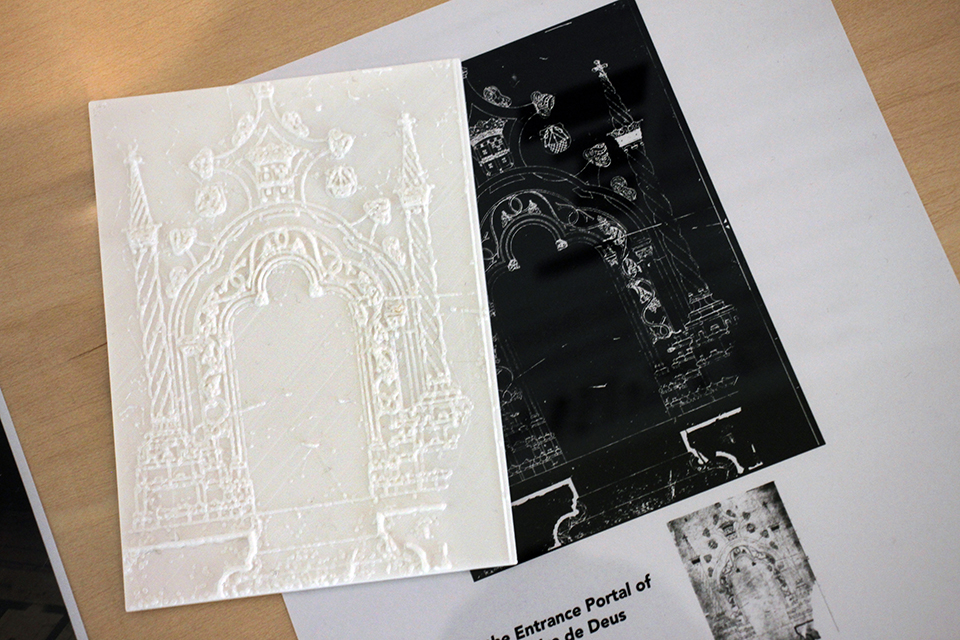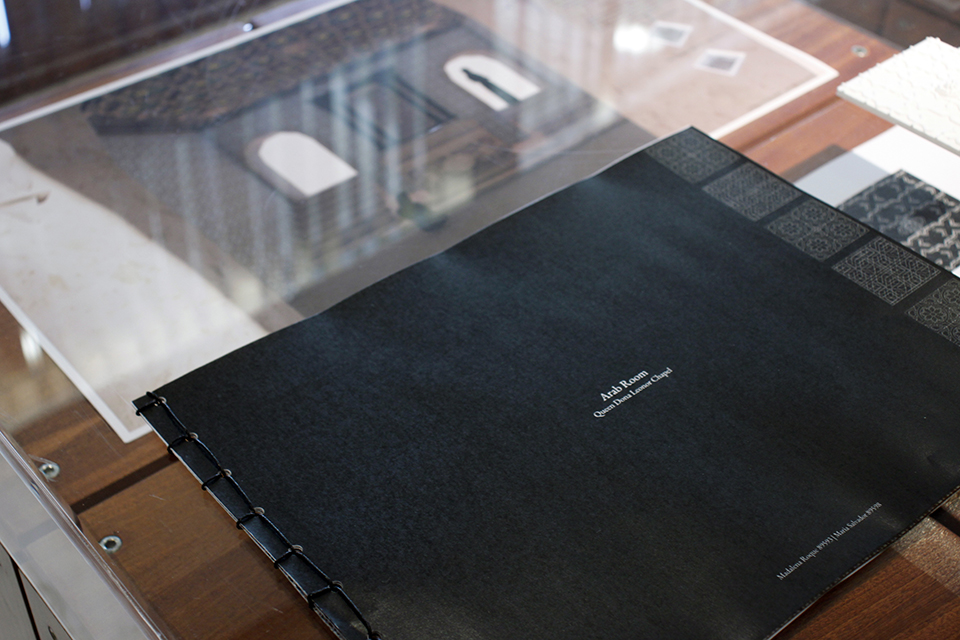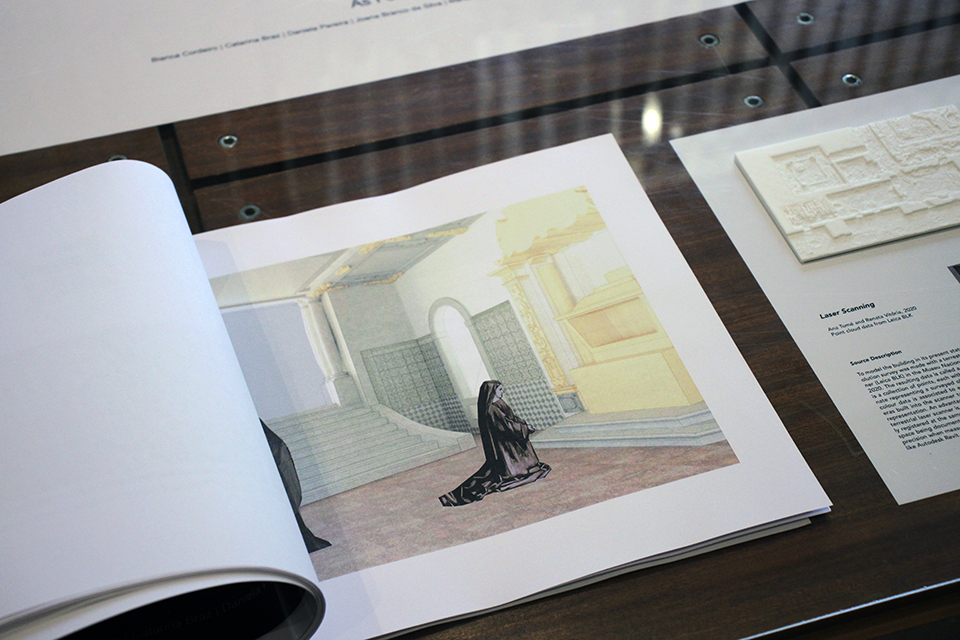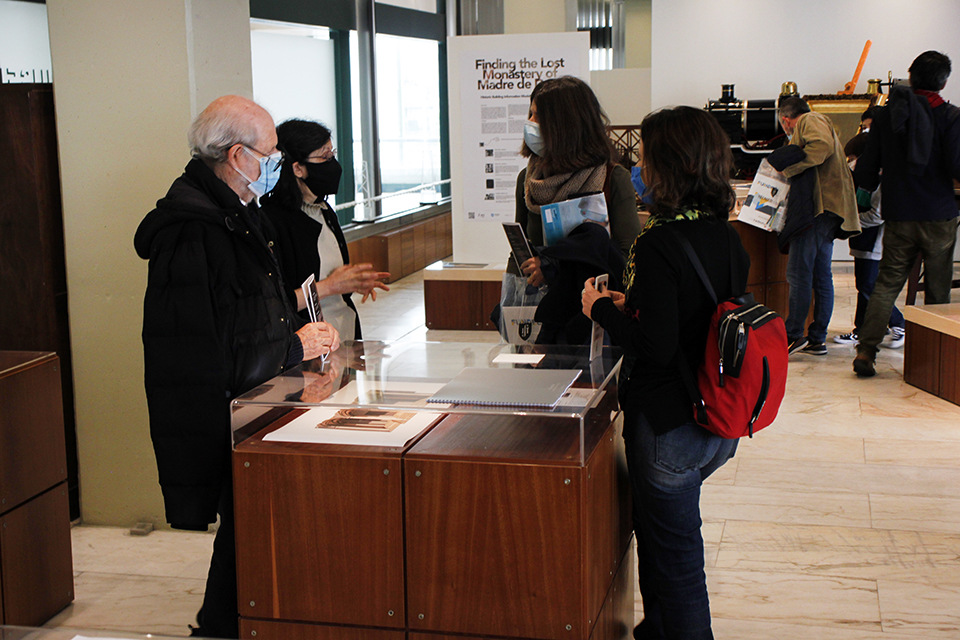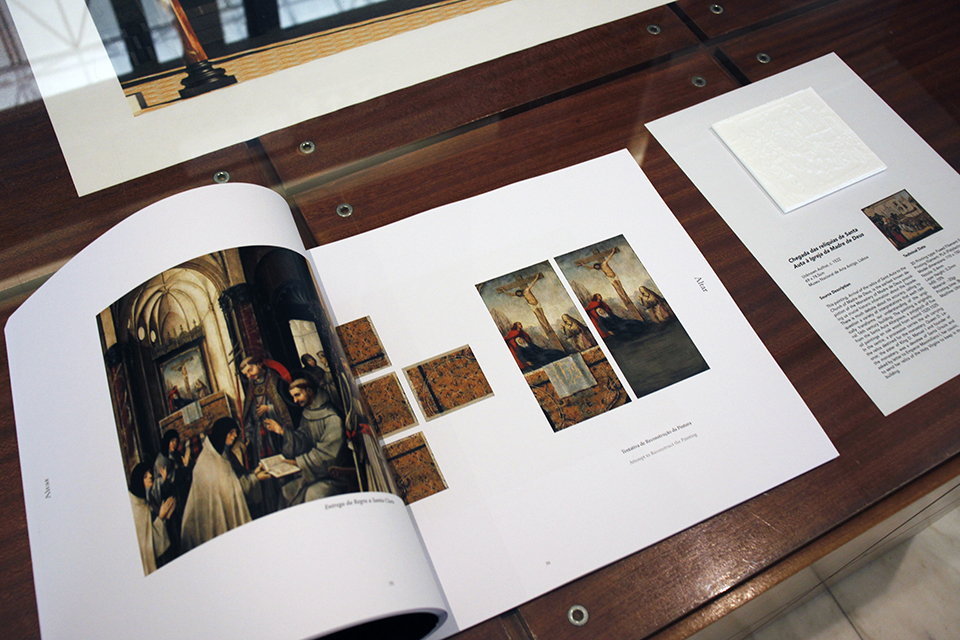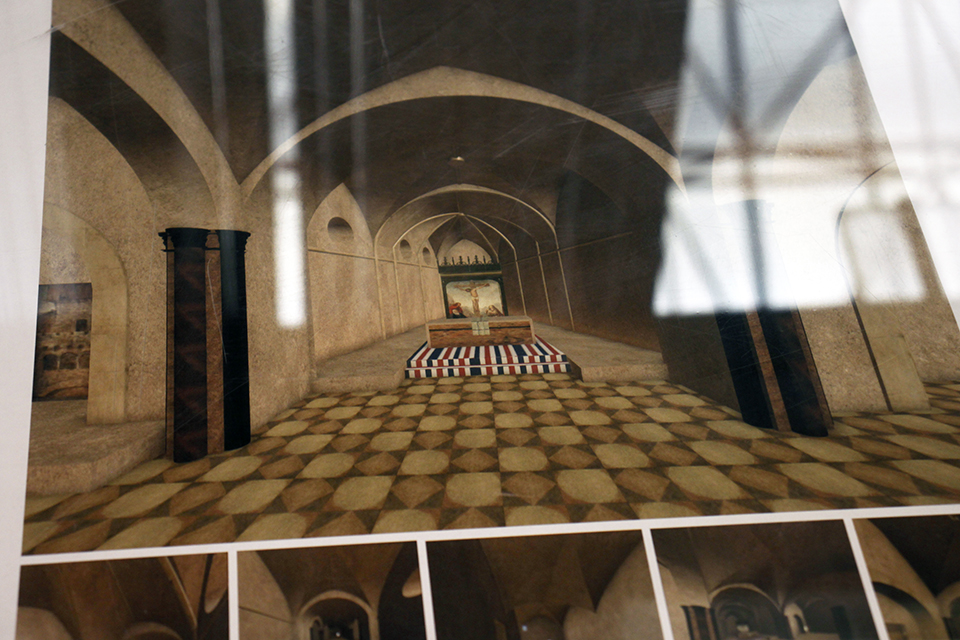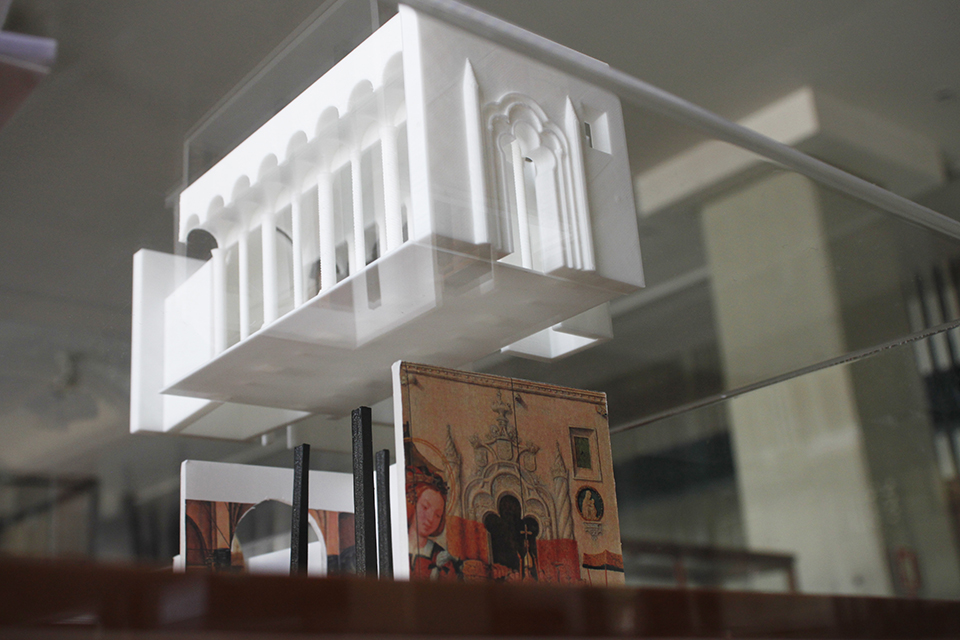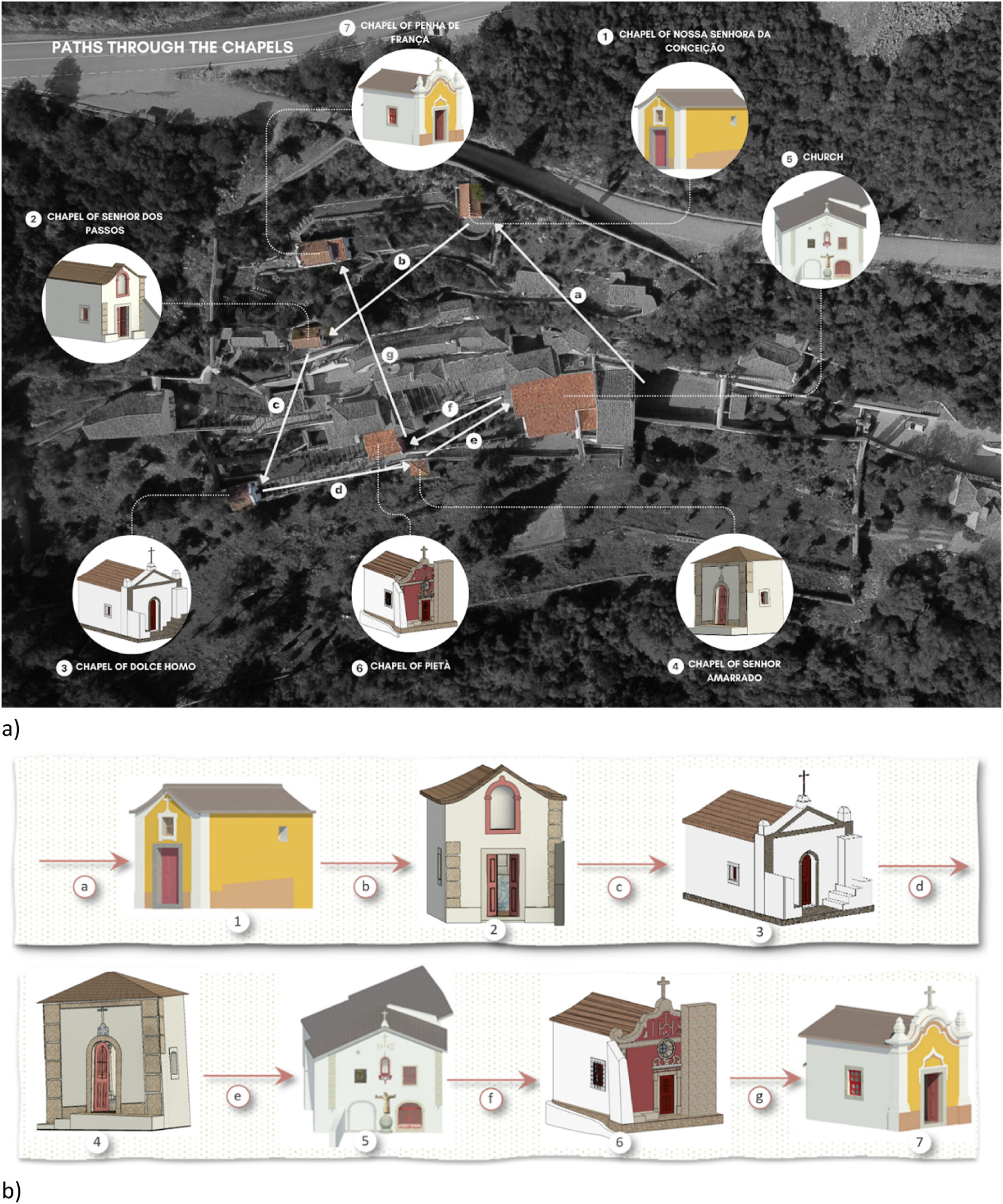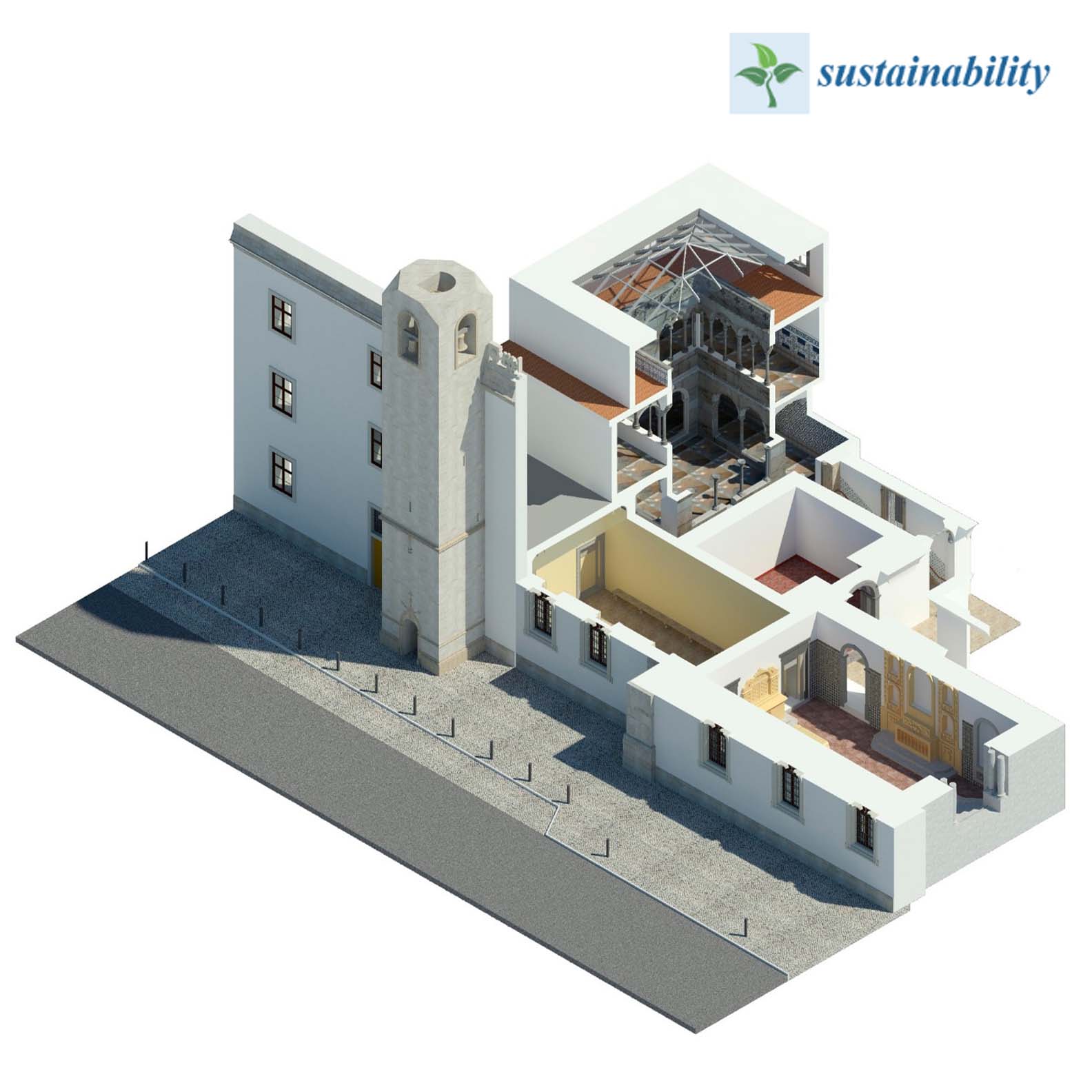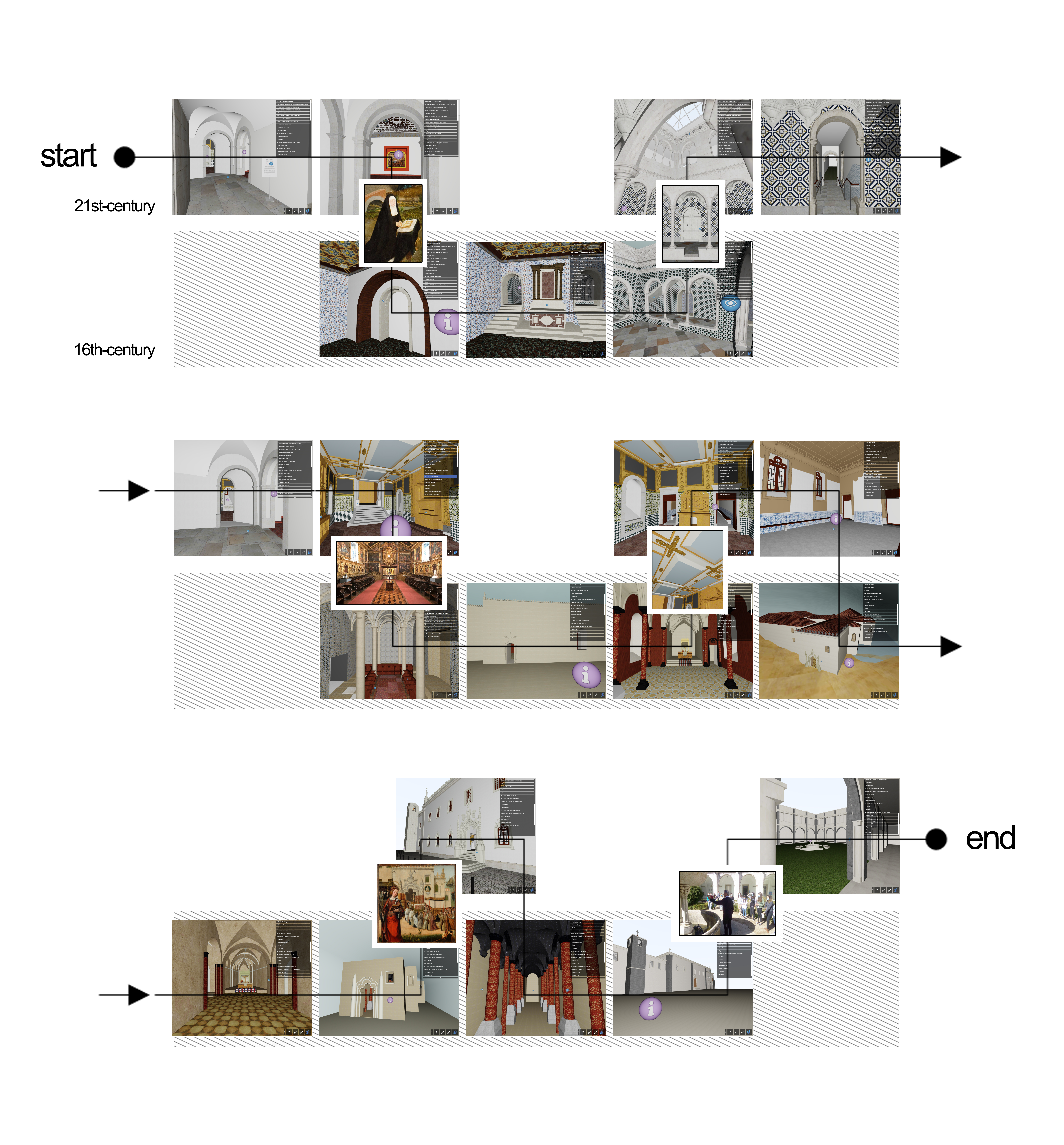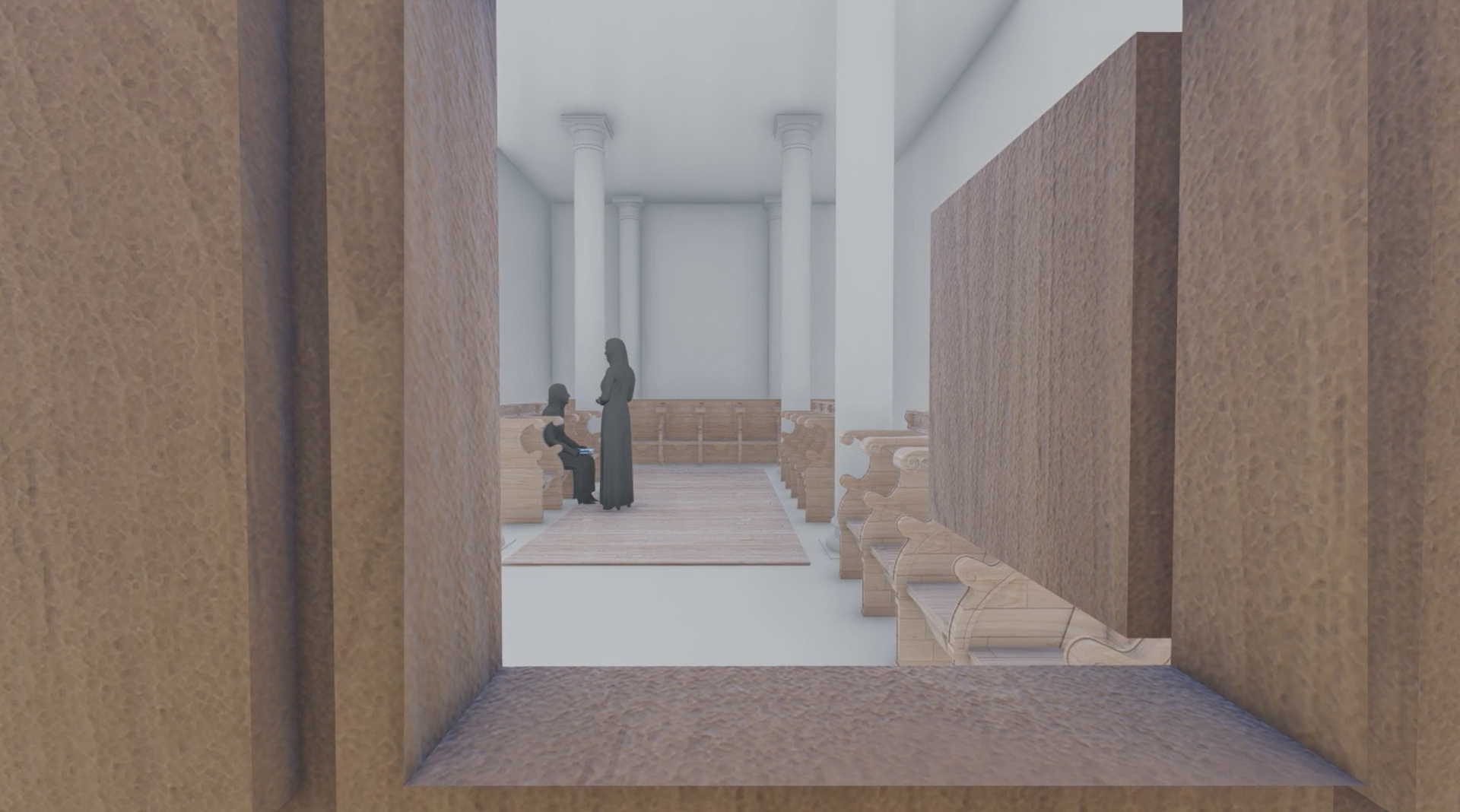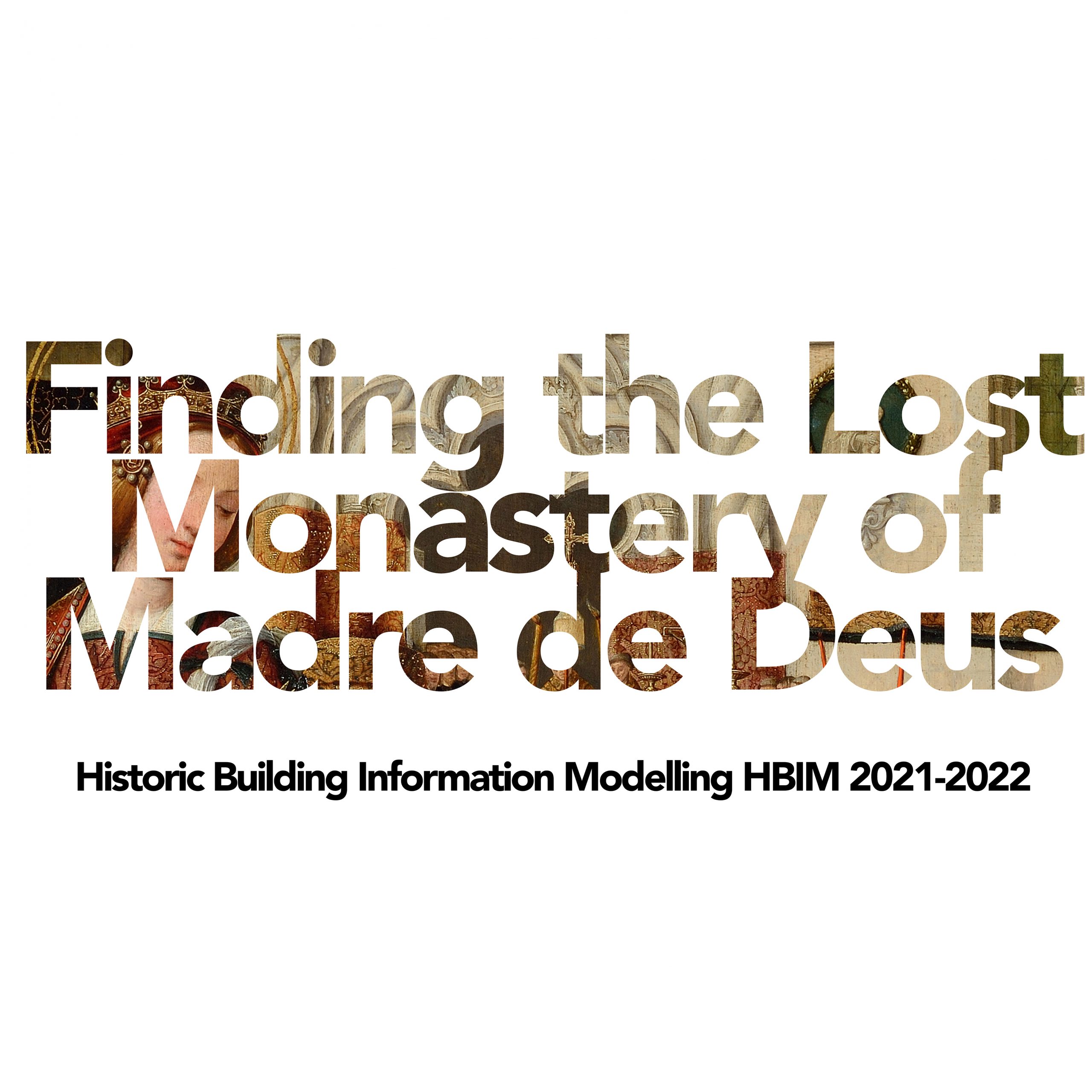
Finding the Lost Monastery Virtual Exhibition
In the fall of 2021, a new 5th year course was launched as part of the restructuring of the integrated Master of Architecture program at Instituto Superior Técnico (IST). The course, titled HBIM (Historic Building Information Modelling) – in Portuguese, MIEH (Modelação de Informação de Edifícios Históricos), is a project-based course which introduces students to HBIM as a tool for heritage documentation and historic research. The first year of the course 2021/2022 situated students within the theme of “finding the lost monastery,” in continuation of our research at the National Tile Museum in Lisbon. Following an introduction to HBIM on IPTI’s e-learning platform, the students were divided into several team projects tasked to reveal mysteries and visualize hypotheses about the various spaces connected to the 16th century nucleus of the primitive monastery.
At the end of the term, the final results of the student work were turned into a physical exhibition, “Finding the Lost Monastery of Madre de Deus” which took place between February 14 to April 1, 2022 in the Museu de Civil, Department of Civil Engineering, Architecture and Resources at Instituto Superior Técnico.
Each of the eight groups presented their virtual reconstruction methods and results in an A3 portfolio which was the primary communication device of the work throughout the term. The portfolios served an important role in communicating the research such as the use of different historic sources and references to other buildings, the documentation of the decision making and modelling strategies used. Each group also presented a large poster that summarized their work in a compelling image. Like a title page, the image was meant to present a first glance of the project and to entice the viewer into the portfolios.
In addition to these 2D contents, a 3D printed identifier of one of the primary historic sources used in each group’s project was also provided. These were created using heightfields of black and white renditions of the original sources such as paintings, historic drawings among others. These 3D objects served as physical wayfinding devices within the room and were intended to situate the audience into the research task of each group through the historic sources themselves.
Along with these identifiers, the two groups focusing on the chronological evolution of the building in time also presented 3D printings of the final results of their work. Cumulatively, these 3D models are part of a research agenda at the National Tile Museum to explore digital workflows in the representation of exhibition materials for the visually impaired.
Following the exhibition at the Museu de Civil, all of the contents have now been turned into a virtual experience to make all of this material accessible to a larger audience such as researchers, educators and even visitors of the National Tile Museum who want to learn more about the history of the building. The location of this virtual experience is a digital model of the D. Manuel Room of the National Tile Museum, an important space in the building which is thought to have originally housed the first Church of Madre de Deus in the 16th century. Taking advantage of the virtual environment, the online exhibition showcases each of the group’s final portfolios, posters, 3D printed identifiers and the HBIM models themselves.
Learn more about the student’s work in our promotional video below:
Organization
Ana Tomé (PhD, IST) and Jesse Rafeiro (PhD, Carleton) – IPTI research
Partnership
Dr. Alexandre Pais, Director of Museu Nacional do Azulejo
Acknowledgements
Dr. Paula Figueiredo, Head of Division of Arquivo, Documentação e Bibliotecas, Departamento dos Bens Culturais, Direção-Geral do Património Cultural, Forte de Sacavém
Prof. Nuno Senos, Department Deputy Chair of the Departamento de História da Arte, FCSH, Universidade Nova de Lisboa, Deputy Director / Full Researcher of the Instituto de História da Arte
Drª Clara Raimundo, Communications Manager of the Sé Patriacal
Museu de Civil, IST

